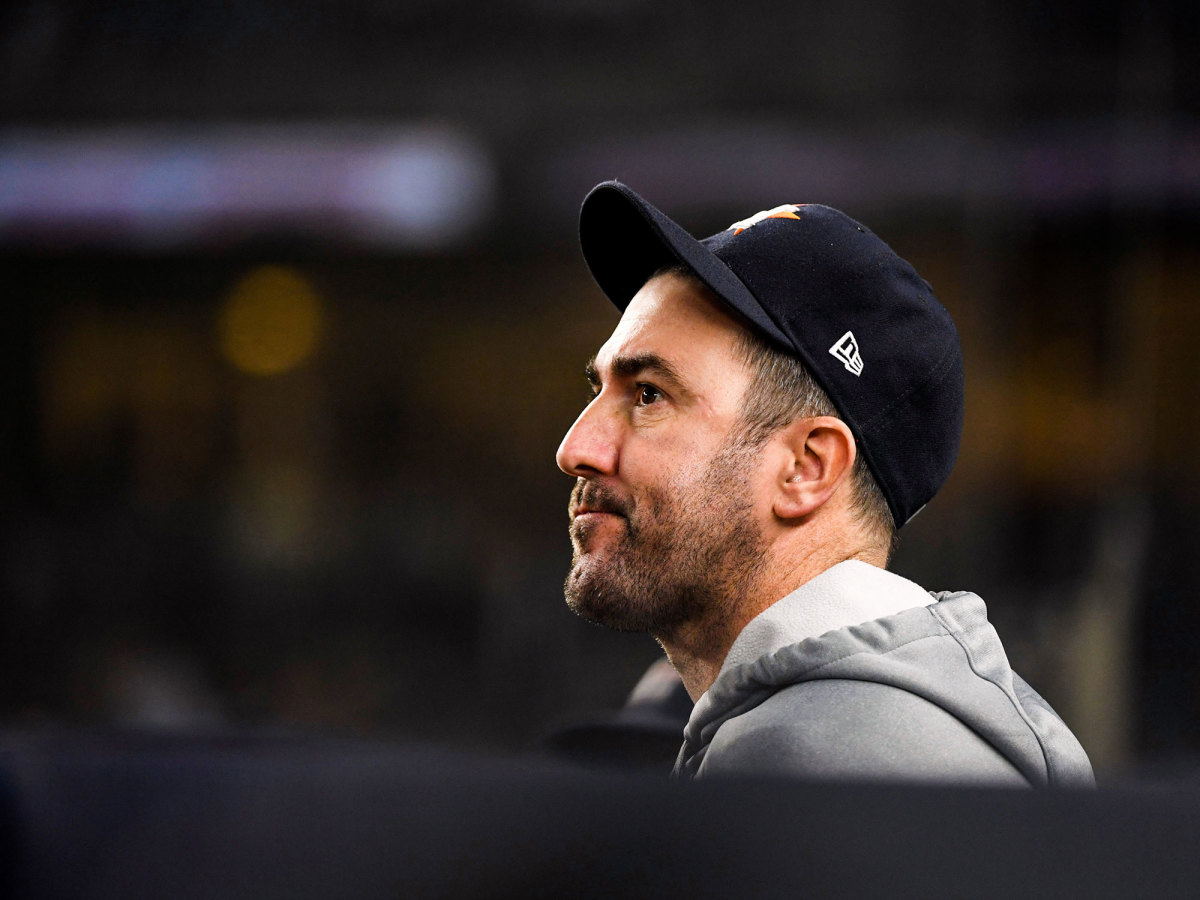Without Justin Verlander, Where Do Astros Go From Here?
Under different circumstances, Justin Verlander’s clarification would have been hugely important: He did indeed have a forearm strain, he said, but it would sideline him just temporarily, rather than for the rest of the season.
The report that I’m currently missing the rest of the season is not accurate. There is a forearm strain... I’m hopeful that with some rest it will heal and I’ll be able to return soon. Thank you for all the well wishes. 🙏🏻
— Justin Verlander (@JustinVerlander) July 26, 2020
Under these circumstances, however? There might not be much of a difference between “out temporarily” and “out for the year.” In a 60-game season, the terms for analyzing an injury have been distorted: A 10-day IL stint is not what it used to be. There's no longer such a tough road to October. And the incentive structure for the entire season has shifted. If there’s a general sense of what it means to announce this sort of injury—what it means for a player to miss a few weeks—those ideas no longer apply. It’s all different. So what does Verlander’s news mean?
It’s unclear how much time he’ll be out. But the precise figure feels almost ancillary; any amount of time will have an outsize effect in 2020. In his clarifying tweet, Verlander wrote that he hoped to back “soon”; if that’s optimistically read as “skipping two starts,” well, that’s about one-sixth of the season. Astros manager Dusty Baker later said that his ace would be shut down for “a couple of weeks”—a timeframe that sounds far less innocuous when you remember that the entirety of the regular season is nine weeks and three days. In other words, the best-case scenario here will still mean significant time away, and there’s a much slimmer space than usual between “best-case” and “worst-case.”
And that’s without the other factor that could make this situation difficult: 2020 is uncharted water for injury management. The pandemic meant that players went through a sudden shutdown, an extended hiatus, and months of work on their own with no idea of when the season would start. For Verlander, who originally suffered a mild injury just before the end of spring training, the lengthy layover offered time to recover—but the start-and-stop training schedule was unorthodox, to say the least, and there’s no playbook for just how to responsibly ramp back up.
As for how much any of this actually matters, whether it’s two starts or the season or somewhere in between? The Astros are built to be so good that no one player can make or break their chances. But Verlander is a particularly tough one to lose. This Astros’ rotation is different from the one that took them to last year’s World Series: Over the winter, they lost valuable depth in Wade Miley and Collin McHugh, and perhaps you’ve heard about a new home for Gerrit Cole, too. This was the best pitching staff in the major leagues by ERA+ in 2019, and even without injuries, it was always going to be a tall order for them to match that in 2020.
But, of course, there are injuries. And not just Verlander’s. Swingman Brad Peacock is on the 10-day IL with a shoulder issue. Starter José Urquidy has only just been cleared to resume baseball activities; after missing all of summer camp for undisclosed reasons, he’s still on the IL, with no timetable on when he’ll return. And Austin Pruitt—another swingman, but the only potential starting candidate that the team added this winter—is out with an elbow injury. What little depth there was here has already been eaten away at.

So where does that leave the Astros? At the top of the rotation, they’ll be hoping for the best from Zack Greinke and Lance McCullers, Jr. That can be an enviable one-two pairing—but the former is 36 years old and the latter is back for the first time since undergoing Tommy John surgery in 2018. In a season where health will be so foundational, that’s not reassuring, especially when there’s so little behind them. The middle of the rotation will be held down by Josh James and Framber Valdez, both of whom spent most of last year in the bullpen, and other than that... there’s not much. If necessary, a few starts could come from Cristian Javier and Brandon Bailey, two rookies who would have likely otherwise been used as long relievers. And in the background, there’s potentially a chance for prized prospect and former first-round pick Forrest Whitley, who’s in the 60-player pool but not on the 40-man roster.
None of that is fun. But it's not disastrous, either. These are still the Astros, as infuriatingly good in every other capacity as their name connotes. Maybe Verlander does return after two or three starts, and even if he doesn’t, Urquidy, Peacock and Pruitt, or some subset of that group, should be back soon to address the issue of depth. Throw in that a 60-game season is small enough to invite plenty of weirdness that could turn in their favor—and that the expanded playoff system has lowered the bar for success—and it all looks perfectly manageable for the Astros, if still not ideal.
That’s not awful. It’s just noticeably far from what was one of the best rotations in baseball last season. And it’s an opportunity to grasp how much the language of injuries has changed: When Verlander was originally hurt back in March, said to be out for “a few weeks,” it was not encouraging. It called attention to the lack of depth in this rotation. But it did not stand out as potentially season-altering or -defining—it was just a few weeks, after all.
